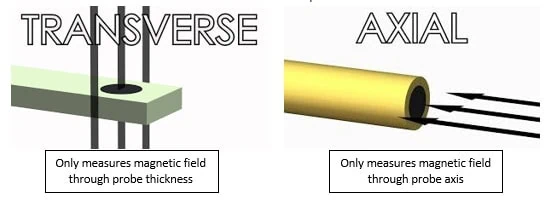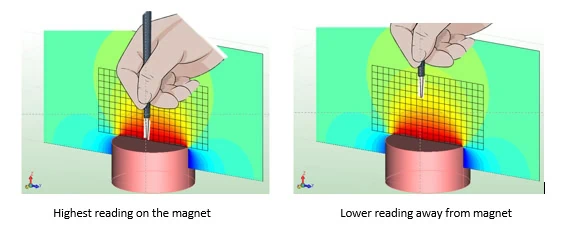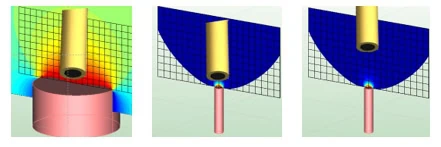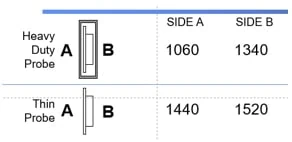Gaussmeter Testing 101
What Is a Gauss Meter Used For, How Does a Gaussmeter Work, & How to Use a Gaussmeter
A Gaussmeter uses a probe to measure the magnetic field around a magnet at a specific location. The user positions the tip of the probe on the magnet or a pre-determined location near to the magnet.
The sensing area of a Gaussmeter probe is at the tip of the probe. The closer the tip is to the magnet, the stronger the reading. It is important to agree with your supplier and/or customer on the location of the measurement.
There are two kinds of Gaussmeter probes: Transverse & Axial

Tips to optimize measurements from a handheld gaussmeter
1. Hold the probe the correct way
2. Use the right size probe for the magnet
If you are taking a reading directly on the magnet surface, it is important for the sensing area in the probe to be smaller than the magnet. If the probe is measuring a spot nearby, but not on the magnet, the size of the probe isn’t as important.
3. Use a fixture to get repeatable measurements
The magnetic field varies around a magnet and a gaussmeter probe is sensitive to this variation. It can be difficult to repeat a reading since slight variations in position can inflate/deflate the readings. A fixture that guides the probe to the same spot from the magnet will minimize the amplitude of the variations.
4. Transverse probes – Hot & Cold side
Because of the way they are constructed, transverse probes are more sensitive on one face, called the ‘hot side’. If the probe is touching the magnet face, the ‘hot side’ will give slightly higher readings.
Questions? Contact us here, or call us at 800.747.7543 – We’re always happy to help!




